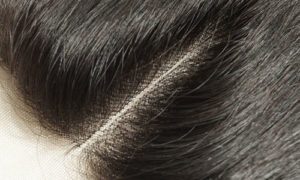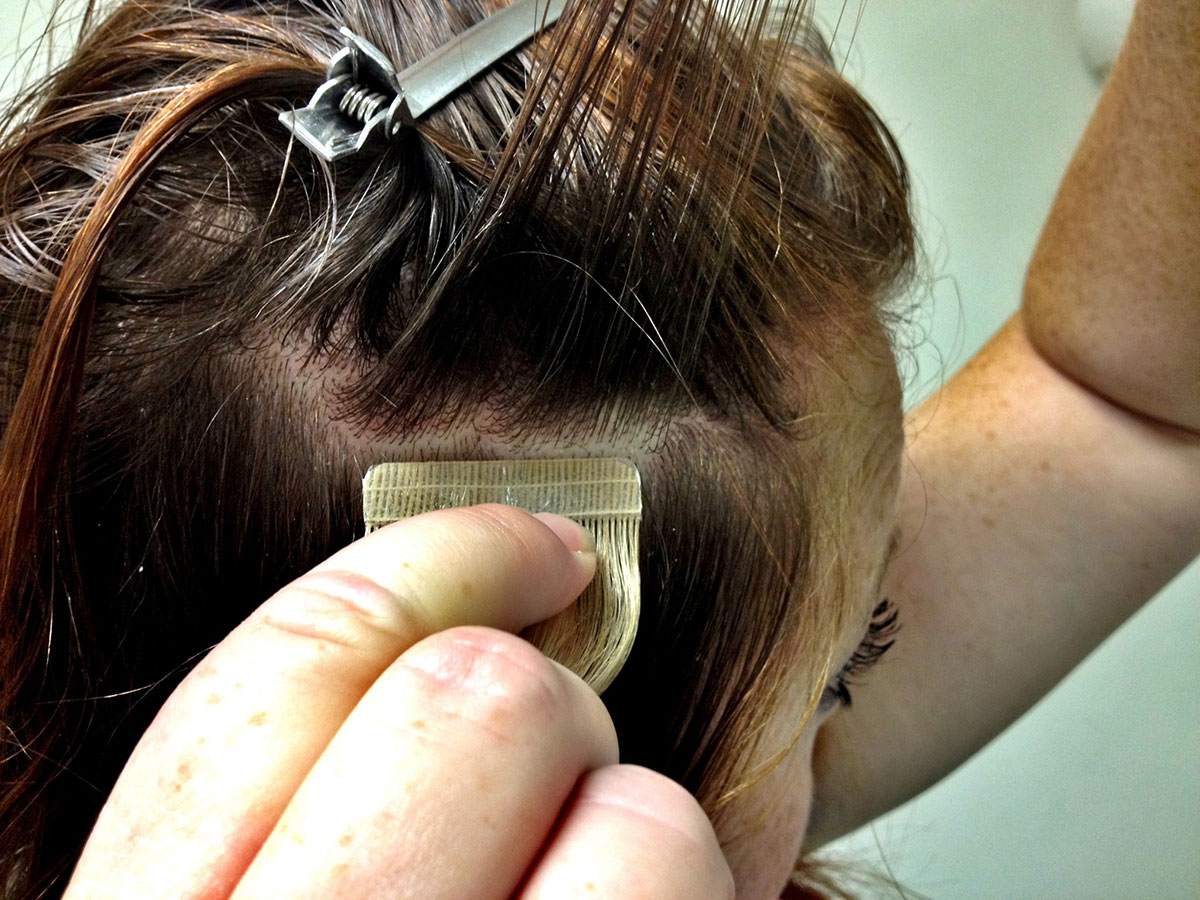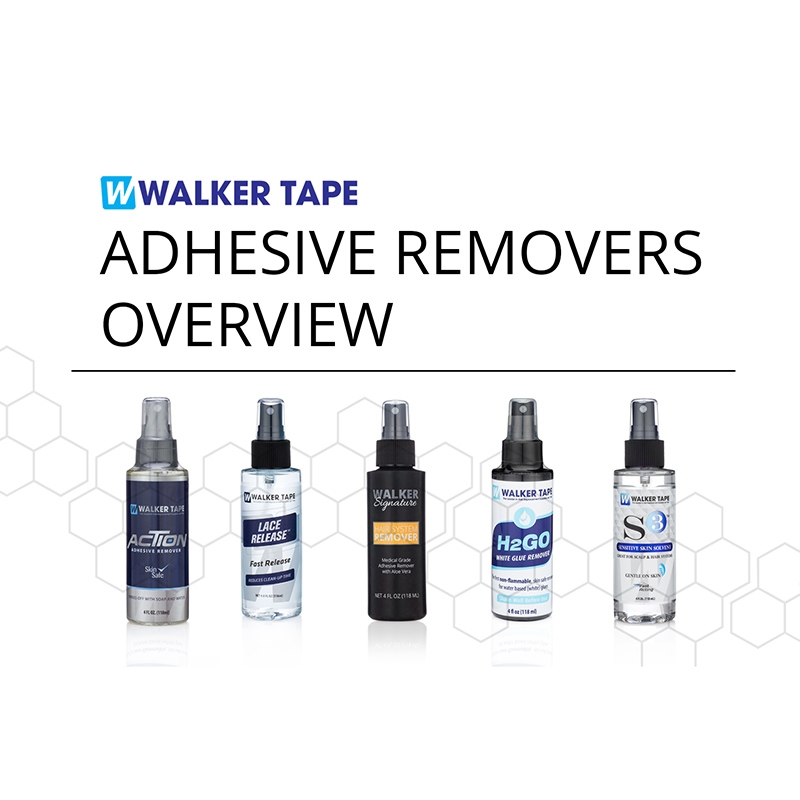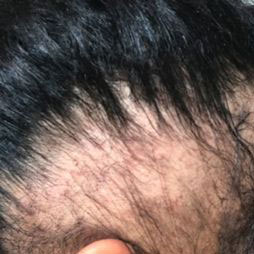
Types of Wigs: Finding Your Client’s Perfect Fit
There are so many different kinds of wigs on the market that it can be difficult to decide which type is right for your client. In order to help you assist clients, we’ve created this handy key to pull from. By the end of this guide, you’ll know exactly what to look for when you start helping your client shop.
By Walker Tape
What Kinds of Wigs are There?
There are so many types of wigs! First off, your client will need to decide if they’d like a ready-made or custom wig. Ready-made wigs are stock hair systems. They’re generally synthetic, pre-styled, and a one-size-fits-all option. For a slightly more customizable option, these units can be adjusted to the wearer’s head for an increase in price. Because these units aren’t custom made for individual clients, they tend to look a little less realistic. However, they’re generally the most affordable option.
Custom wigs are made specifically for a client. They’re generally made from lighter materials and can be more comfortable to wear. Because these are tailor-made, more detail can be focused on the front of the hairline. This is important because the front of the hairline is considered to be the most important part of a hair system. This is because the hairline can be a dead giveaway of a wig or replacement system. If it blends well, no one notices that it’s anything other than the wearer’s own hair.
Types of Wigs
There are four main types of wigs: polyurethane (“poly”), mesh (lace and monofilament), combo, and open weft units. Depending on your client’s needs for hair replacement, they can also choose from full wigs, toppers (partial wigs), and hair pieces. Let’s take a deeper look at these systems so your clients will know exactly what type of wig to reach for.
Polyurethane Styles
Polyurethane (“poly”) wigs are generally thin and pigmented. This helps them match your client’s skin tone and blend in. This skin-like material makes using tapes and adhesives easier on the wig as a whole and helps extend the wig’s life. The comfort of poly units isn’t quite at the level of what you’d be able to expect with a mesh unit. It tends to run hot since this base material isn’t as breathable. Some wearers have also reported that poly wig bases have a thicker feel and creates a “floating” sensation over their scalp. This has a tendency to affect the look of the hairline and can make it appear less natural.


Mesh Units
Mesh units are a general category that is made up of full lace and monofilament styles. The full lace group is comprised of swiss lace, glass silk, and 100% hand tied systems. Monofilament constructions include 100% hand tied, single, and double units.
Monofilament material is a blend of very fine lace-like material, generally polyester or nylon mesh. Because of the unique construction of this wig type, it’s great for sensitive scalps as the top is breathable. It also takes on the color of the wearer’s scalp once it’s in place. This is because each hair on monofilament wigs are hand-tied to the mesh blend base. This time intensive process creates a very natural look and blends the hairs together seamlessly. This enables you and your client to part the hair wherever you’d like and still have the appearance that it’s growing out of their own hair follicles.
This category is, without a doubt, the most versatile option. They can be styled in an updo, tucked behind the ears, and parted in virtually any spot without the wig base being noticeable. The hairline of the wig is almost undetectable and, generally, the scalp can be seen through the mesh. This gives a lot of versatility and provides a natural and authentic look.
Full lace units generally have urethane strips for adhesives to stick to. Our lace tapes are the perfect choice to use with mesh systems. These units are very delicate, so lace tape is gentle enough to use with these hair systems so they aren’t damaged.
Combinations
Some monofilament styles can be a combination style that can have a machine-made back and sides, with a hand-tied top. This is more affordable, while still giving your clients almost all of the benefits of a hand-tied mesh unit. The combos mentioned in this section are the most popular constructions, but we’ll talk in more detail about bases below once you read further.
The construction of lace front wigs is really as simple as it sounds. These styles have a lace portion only in the front of the unit. The sheer mesh base that the individual hairs are tied to is perfect for creating a natural-looking hairline. The lace sits right along the forehead where the hairline would naturally be. The rest of the unit utilizes a thicker cap as a base. These may also have clips sewn in that help to secure it to other existing hair or wig caps that might be used.
Welded lace is fibers that have been tightly interwoven, forming a “welded” fabric. This allows you to part the unit anywhere your client wants. Welded lace is also the most durable type of lace. Trimming the lace fronts on these types of units can cause them to separate, so if you choose to do so for a client, proceed with caution and use only the correct tools recommended by the manufacturer of the wig.
French drawn units are really interesting. They’re constructed using three layers of material. Two layers of glass silk are used, along with one layer of swiss lace. The swiss lace is sandwiched between the layers of glass silk and is the material that the hair is tied to. The glass silk above and below the knot allows for a smooth and comfortable wear experience. French drawn units create a very realistic and natural scalp appearance because of the layered construction that keeps the knots hidden.
Types of Knots
There are so many different types of knots used in wig construction. We’re planning on posting another, more in depth, blog post with all of the information we know about wig knots. For now though, we’re going to leave you with a brief list and a short description for each type of knot.
- Single Knot – A knot that’s only been tied once where both hairs are looped back through the knot.
- Single Split Knot – A knot which has been tied once. It has a lower profile than the single knot because only one hair (rather than two like in the single knot) is looped back through the knot.
- Double Knot – This is the strongest type of knot because it’s been tied twice.
Double Split Knot – This type of knot has the look of a single knot, with the strength of a double knot.
- V-Loop Knot – This is not so much a knot, as it is a weave. The hair is sewn in a “V” or “U” shape through the base material and the other side for added security.
- Direct Inject Knot – The hair is directly injected into the wig’s base material and then trimmed and sealed on the other side for added security. The hair doesn’t return back through, so it results in less tangling.
Base Materials
As with types of knots, there are tons of different options for base materials. We’re also planning a more in depth post for these, but we’ll give you an overview of each type for now.
- Welded Lace/Mono – This is the most durable type of lace. It allows you to part the unit anywhere, while maintaining a natural hairline.
- Swiss Lace – Softer than welded lace and also more delicate. Part the unit anywhere your client wants while maintaining a natural hairline.
- Single Monofilament – Part the hair anywhere with a natural looking “growth” at part.
Double Monofilament – The same base as single monofilament, with a layer of glass silk underneath to mimic the appearance of a scalp.
- Glass Silk – Very soft and fine material that creates a realistic scalp color and effect
- French Drawn – This is a special construction that gives the most natural look. It creates the appearance of growth at the scalp and allows for parting anywhere.
100% Hand Tied Stretch – This type of base mimics natural hair density and movement.
- Polyurethane – Usually clear or flesh-toned, this base can be bonded. Polyurethane also generally coats the edges of monofilament toppers for extra durability.
- Silicone/Anti-Slip/Suction – This base can grip against bare skin. It’s best for use with clients who have no biological hair.
Determining the Best Option for Your Client
When you’re helping your client shop, you’ll need to know if they’re aiming for a curly, wavy, or straight look. You’ll also need to know their preferences for base material and hair type. Check out our downloadable chart if you have questions about determining what your client might like best. Those elements can make a big difference in comfort and how the unit wears.
Hair texture is an important aspect to consider when your client is hunting for the right hair system. If they’re leaning towards wearing a partial wig, matching the wig with your client’s hair is crucial so that it’ll blend smoothly. You may also need to consider the density of units your client is looking at, especially if they’re aiming for a more natural look.
Types of Hair: Synthetic or Human
This is the issue at the heart of choosing a hair unit! Your client can choose from human or synthetic hair, and there are multiple types within those two categories to decide between.
- Human Hair – This hair type gives the most natural look and feel, along with the most styling versatility. This type of hair also requires more styling and care. It can be worth the investment though as they can last over a year with proper care.
- Virgin Hair – This is the highest quality human hair available. This hair is all from a single donor. This hair hasn’t been dyed, permed, or bleached. This helps cut down on tangles and can last over a year with proper care. Virgin hair qualifies as Remy hair, but not all Remy hair is virgin hair.
- Synthetic Hair – Higher quality synthetic hair offers a look and feel similar to human hair, but has limited styling versatility. Requires little maintenance and can generally be worn as soon as it’s unpackaged. Less durable than human hair and will last 4-6 months with proper care.
- Heat Friendly Synthetic Hair – This type offers more styling versatility due to heat friendly construction. Can be more challenging to style than human hair. Less durable than traditional synthetic hair that can last 2-3 months with proper care.
Synthetic hair is generally less expensive, but needs to be handled differently and doesn’t last as long. That’s not necessarily a bad thing if your client likes to change their style up often though. Although, working with synthetic units can be a bit of a challenge because they aren’t able to be styled using hot styling tools unless you get a “heat safe” model.
Synthetic hair might be the perfect choice for your client is looking for a more affordable option and want to use it on a short term basis. These units are also better for short to mid-length hairstyles. Just remember, you’ll need to keep synthetic wigs away from any kind of heat. It will cause permanent damage to the hair fibers and may even melt the hairs together.
Human hair wigs are generally a more versatile hair replacement option. While they are generally more expensive, they can last much longer than synthetic alternatives. They also just tend to look more natural as the hair shifts during wear because they have a higher quality texture and feel.
Heat tools can be used on human hair wigs and are great for clients that get bored of how their hair is styled day after day. They’re able to change the style of these wigs up much more often than if they were using synthetic hair. If your client’s goal is to wear their wig for longer than a year, human hair is the best option. These hair systems hold up well and are the best choice if your client prefers the look of longer hair.
Human hair can come from places all over the world, such as Asia, Africa, China, and Europe. Hair can be sourced through various different ways, so make sure to do your research and look into different types of hair from different regions before taking the plunge and making an investment in a wig.
Whichever unit your client chooses, you’re going to need something to adhere it to their scalp. Various glues (sometimes known as bonding adhesive) and tapes are used by over 90% of alternative hair wearers because they offer a more secure attachment. Some stylists even feel that the adhesives can help to give a more natural appearance. Shop our tape and adhesive products today to find the right fit for your client’s needs.






















